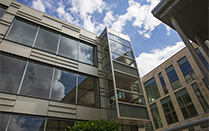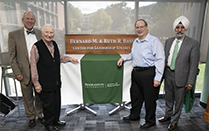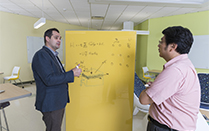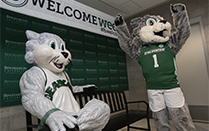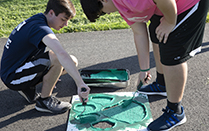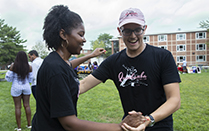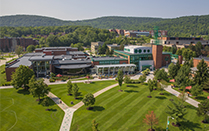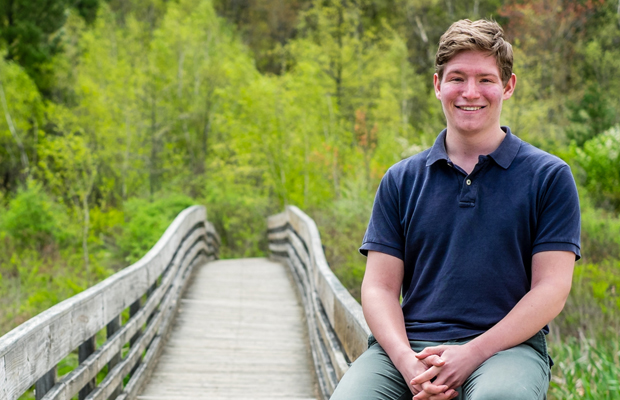
Undergrad links art, science
To harness his love of science and art, Benjamin Mclauchlin created an environmentally themed art exhibit.
Mclauchlin, a senior at Binghamton, grabbed the attention of Jessica Hua, an assistant professor of biological sciences, not only with his scientific background but also with his art portfolio.
With guidance from Hua, Mclauchlin created an interactive art exhibit with 20 pieces ranging from a painting of tadpoles to a papier-mâché organism. The project explored art’s influence on perception of research.
“It was a combination of two studies actually,” says Mclauchlin, an environmental studies and graphic design major. “We not only tested for perception of research, but also for comprehension and retention of information in the exhibit.”
Perception of research was measured by a pre-quiz and follow-up quiz. In total there were around 80 participants from both scientific and non-scientific backgrounds. Participants without scientific backgrounds had a 20 percent increase in research interest after attending the exhibit, and scientifically inclined participants had a 10 percent increase.
On the other hand, Hua’s ecology students experienced no change in perception of scientific research.The students even decreased in retention of information in a follow-up quiz one week later. Most students retained information better after reading scientific abstracts instead.
“This suggests that art can facilitate scientific appreciation and is most influential for individuals with non-scientific backgrounds,” Mclauchlin says. “I can see this information being used for science museums, exhibits or by scientists who want to communicate their research to the public.”
Vanessa Wuerthner, a doctoral student in Hua’s lab, says Mclauchlin brings something to the lab that no other student does: He turns research from the lab into art. “Ben puts in an immense amount of time and effort in making art pieces that he then brings together at art shows that are open to the public,” she says. “All of his artistic efforts allow the lab to really bridge the gap between the science community and the local community.”
Mclauchlin received a Summer Scholars and Artists fellowship to conduct research on marine debris and plastics in Binghamton during the summer. Beyond the lab, he volunteers in the Nature Preserve, attends Ballroom Dance Club and participates in a student-run theater group.
Mclauchlin says he tries to balance his workload each semester with half science courses and half art courses.
Hua says she was impressed by Mclauchlin’s range of skills. “Ben is very creative, and his willingness to help others makes him an asset to the lab,” Hua says. “It could be 1 a.m., and he’ll be the first person to offer help to another student in the lab.”
